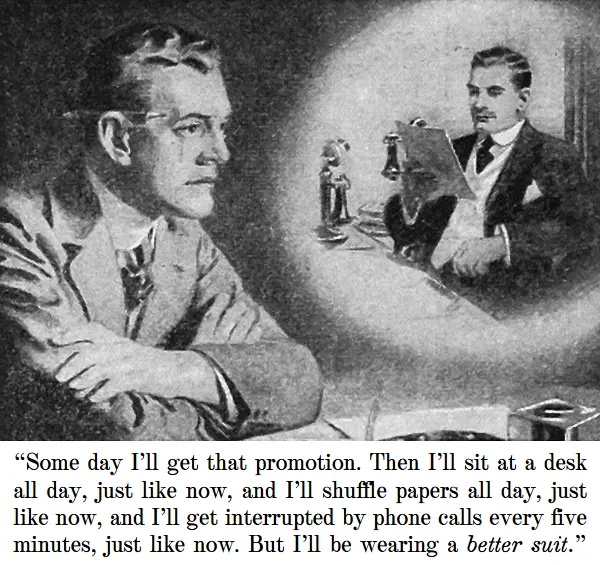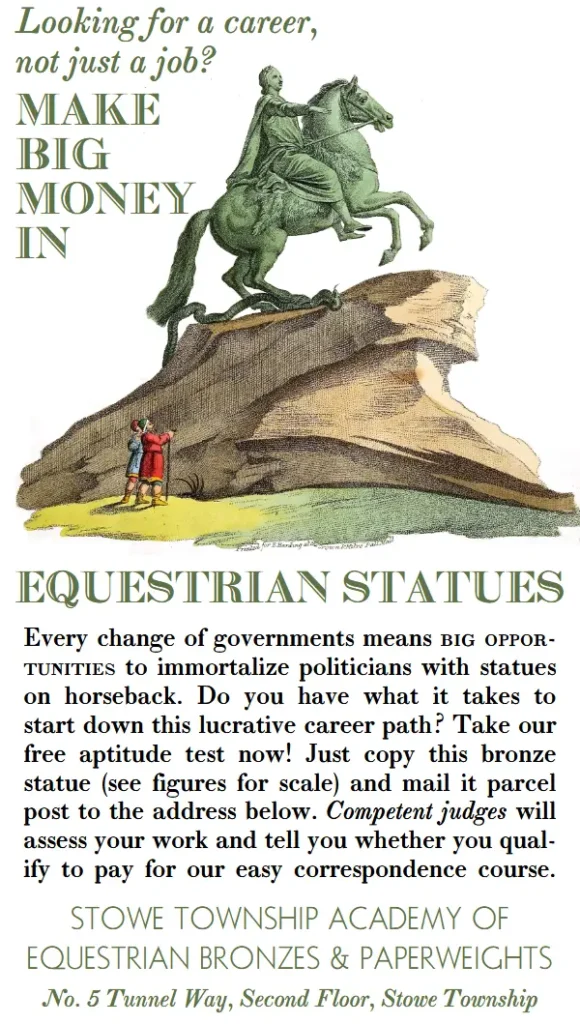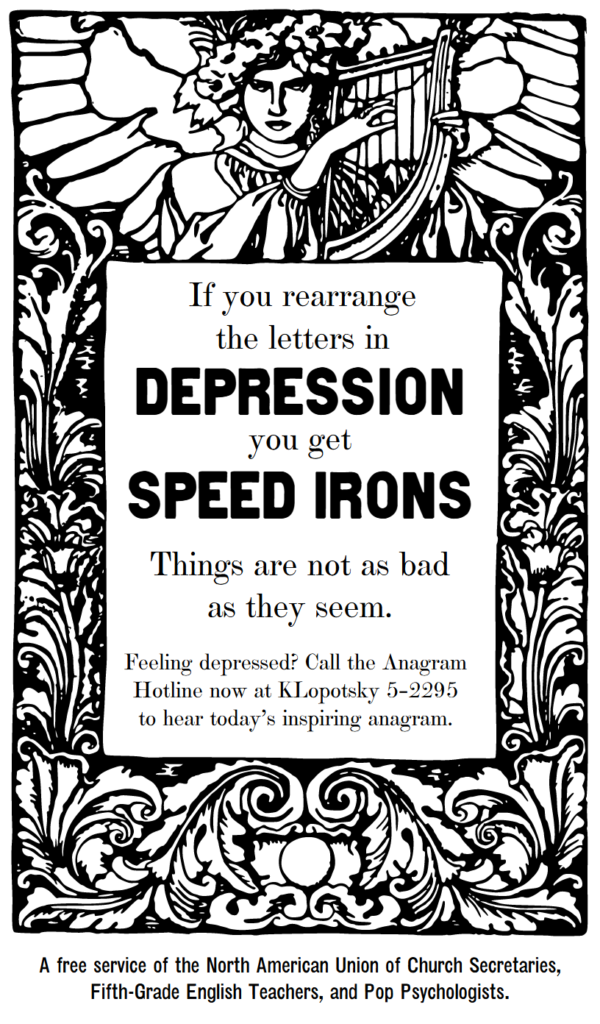Office of McClang & Pratt, Architects
FROM THE ILLUSTRATED EDITION.
Advertisement.
ORDER OF EVENTS FOR THE INAUGURATION.
Owing to inclement weather, the inauguration will be held in the old Hecht Company warehouse on New York Avenue.
1. Motorcade to the venue is lost going around Logan Circle for 34 minutes.
2. Motorcade reaches venue; argument about protocol with warehouse security guard.
3. Musical prelude by the East Sioux Falls High School Marching Band.
4. Poem: “I Am Overwhelmed by the Importance of This Occasion,” by incoming Poet Laureate Irving Vanderblock-Wheedle.
5. Musical selection: “No Motherland Without You,” performed by special guests the People’s Revolutionary Glee Club of the Democratic People’s Republic of Korea.
6. Inauguration. (N.B.—In order to avoid bogging down the proceedings with crusty boring ritual, the President-Elect has asked that the Oath of Office be omitted on this occasion.)
7. Silence in heaven about the space of half an hour.
8. Cheeseburgers!
9. Inaugural Ball, featuring the Syrup Tones, Silver Spring’s most famous Guy Lombardo cover band.
Advertisement.
AN OLD NURSERY RHYME.
Tepid Teddy Tinker
Was a sloppy thinker;
When he guzzled too much wine,
Mixed up Kant and Wittgenstein.
Silly Sally Sturgeon
Took him for a surgeon,
Married him before she knew
He couldn’t tell K. from W.
Now she’s another heavy drinker,
And it’s thanks to Teddy Tinker.
Teddy Tinker, Teddy Tinker,
Wasn’t he an awful stinker?
CATCHING UP ON CORRESPONDENCE.

hi!,I like your writing so much! share we be in contact more approximately your article on AOL? I need a specialist in this area to resolve my problem. Maybe that is you! Looking ahead to see you.
Your problem is that you are still looking for Dr. Boli‘s articles on AOL. Perhaps you ought to try CompuServe, and please do not hesitate to ask if you need more help.
Thank you for your sharing. I am worried that I lack creative ideas. It is your article that makes me full of hope. Thank you. But, I have a question, can you help me?
No. So much for hope.
I loved as much as you will receive carried out right here. The sketch is tasteful, your authored subject matter stylish. nonetheless, you command get got an edginess over that you wish be delivering the following. unwell unquestionably come further formerly again as exactly the same nearly very often inside case you shield this hike.
Always a delight to receive a fan letter from James Joyce.
Thank you, I have just been searching for information approximately this topic for a while and yours is the best I have found out so far. However, what in regards to the bottom line? Are you certain concerning the supply?
The supply is indefinitely large. Dr. Boli has not run out of sarcasm yet, and he does not expect to run out at any time in the near future.
Throughout the two-day Day of the Useless get together, which is Mexico’s largest annual celebration and a national holiday as well, the main focus is all about remembering liked ones who have passed on.
This comment has left Dr. Boli thinking he ought to move to Mexico, where at last he would be appreciated at least one day in the year.
On this consideration we must always recognise that we have slipped into the area of determinism.
Indeed, slipping into the area of determinism seems almost inevitable, doesn’t it?
Although he has not obtained permission to do this, he has been abducting and converting quite a few homeless people.
You leave us hanging. Into what did he convert them? And to whom should he have applied for permission?
Hello, I appreciate that you provide detailed information about your dermocosmetics products. This allows me to make informed choices about the products I purchase.
If you have been reading the Magazine under the assumption that you were learning something useful about dermocosmetics products, might we suggest Wikipedia instead? Dr. Boli hates to turn away a reader, but it would be in your own best interest to take your information from a more reliable source. We are not responsible for dermatitis or any other injuries caused by taking our advice on dermocosmetics products.
This brilliantly demonstrated how excessive-pitched or excessive-frequency sounds can break materials apart.
Our attorneys are of the opinion that this Magazine cannot be held responsible for material damages, no matter how shrill the writing may occasionally become.
How fascinating is most of the true world as a gaming environment?
Not very.
Th is c onte nt was written wi th the he lp of GSA Conte nt Generator Dem oversi on!
We have decided not to purchase the full version of your software, but thank you for the demonstration.
FROM THE ILLUSTRATED EDITION.
Advertisement.
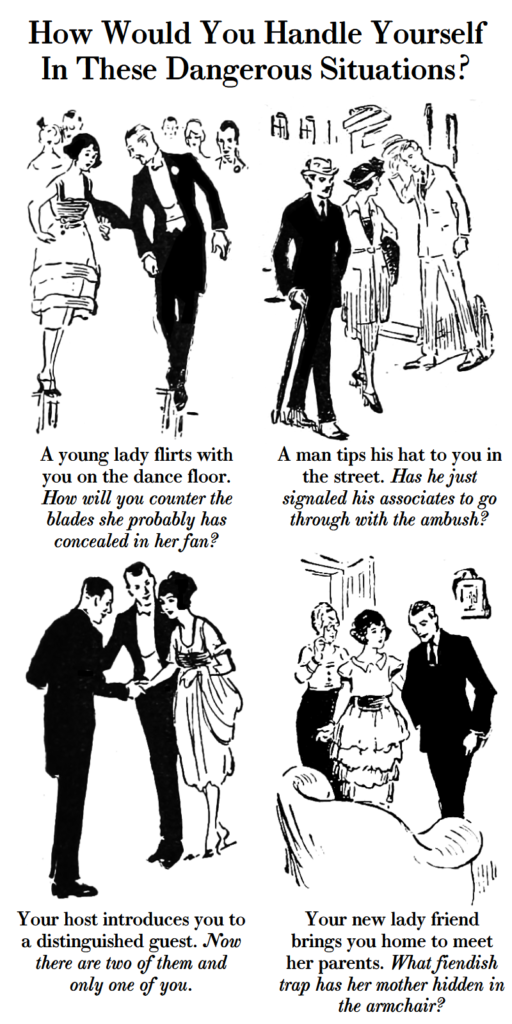
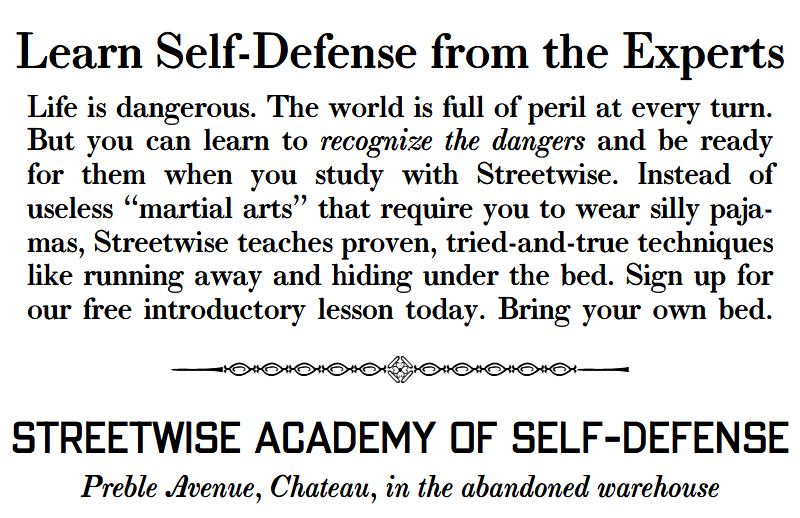
IN LEGAL NEWS.
According to the suit brought by the Buckingham & Sanders Artist Pigments Corporation, Mr. Johnson had defamed the company’s product, and caused material harm, by stating at an artists’ conference that he “could not speak the name of that color without spitting.”
Mr. Johnson (appearing pro se) admitted that he had spoken those words, but argued that, in American libel and slander law, truth is a defense. In an unusual move, he invited Judge Ronald H. Gramophone to speak the name of the color in question. After three unsuccessful attempts to pronounce “Phthalo blue” without a considerable amount of spray, His Honor dismissed the case.
